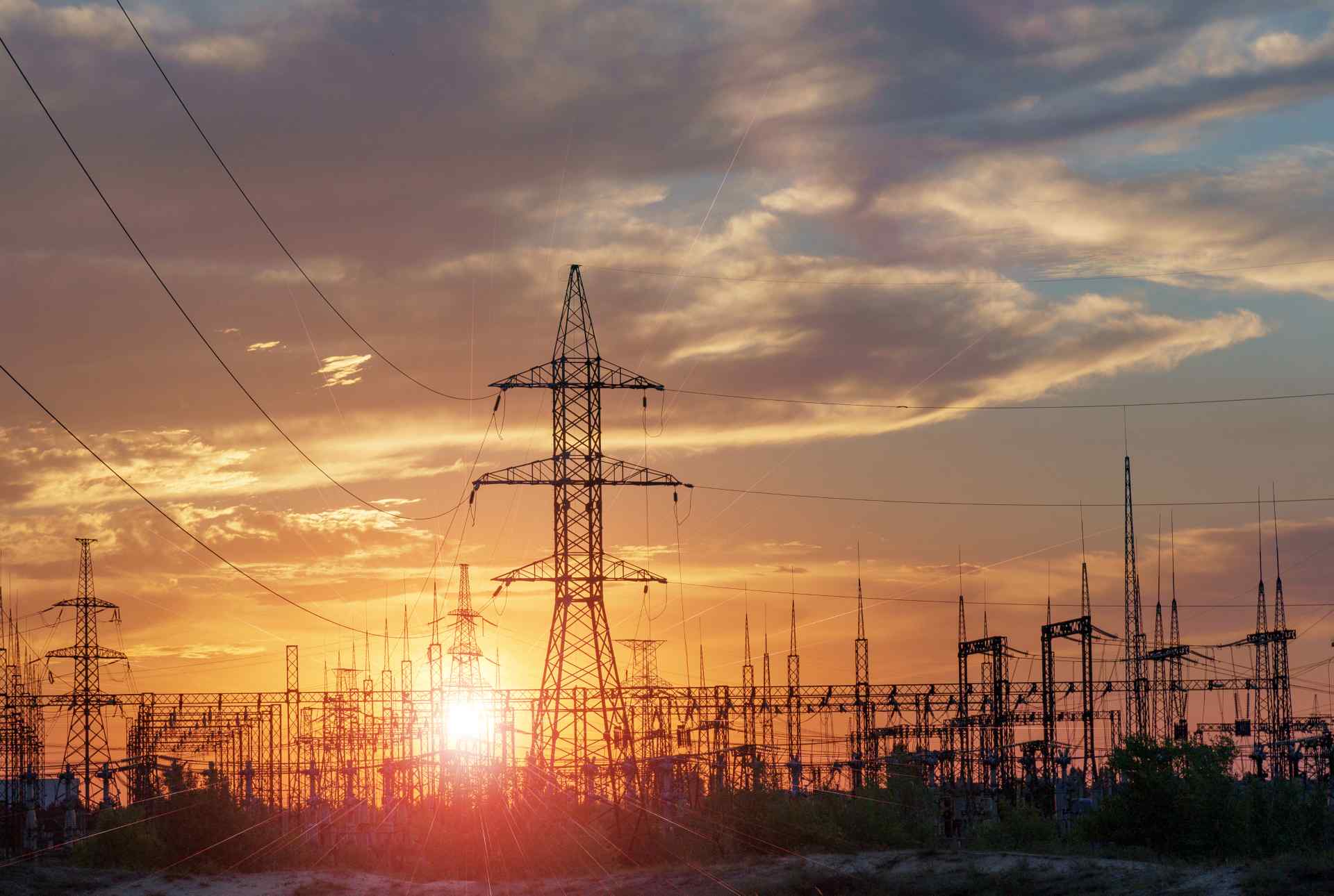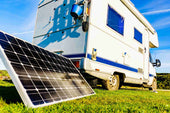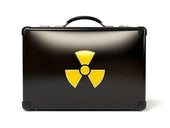An electric power grid is a reciprocally connected network of stations generating electricity. It delivers electricity to both producers and consumers.
In addition, it has high-voltage transmission lines that can carry power from its sources to demand centers and lines that connect to each consumer.
The power stations are sometimes near sources such as fuel or dams. They are often large enough to accommodate economies of scale and far from residential areas to prevent accidents.
Meanwhile, the electric power will increase to a higher voltage and connect to the transmission network.
The power transmission network can move power even long distances until it reaches its full scope, sometimes across neighboring countries. Once it arrives at the substation level, power transfer will be from the transmission to the distribution level.
As it exits the substation level, it enters the wiring for distribution. Lastly, it arrives at the service location and moves from distribution to service voltage. Electric grids can vary in size. They can cover a single building, national power grids covering the whole country, or transnational grids transmitting power across countries.
Thus, electrical power grids are important in the United States economy. Electricity is crucial to every American's life, and the government invests money to protect it from threats.
This article will discuss the history of electric power grids and their vulnerability. We will also tackle what could prevent threats to power grids.
History of Electric Power Grid

In the 1880s, electricity competed with hydraulics, steam, and coal gas. It became in demand since coal gas produces poor light, makes rooms hot and smoky, creates wasted heat, and gives carbon monoxide and hydrogen.
Several companies took advantage of the economies of scale and moved centralized power generation, system management, and distribution elsewhere. They have devised long-distance power transmissions, which made the interconnection of stations possible.
This has paved the way for the balance and improvement of load factors. In 1901, Charles Merz of Merz and McLellan Consulting Partnership constructed the Neptune Bank Power Station in Newcastle, Tyne, United Kingdom. By 1912, they had developed the largest integrated power system in Europe.
In 1918, he was appointed head of the Parliamentary Committee, and his work inspired the creation of the Electricity Supply Bill of 1919. This bill became the first step toward an integrated electricity system.
The Electricity Supply Act was enacted in 1926, leading to the establishment of the National Grid.
In 1938, the Central Electricity Board standardized Europe's electric supply, which was called the National Grid. They also established the AC grid, which runs at 132 kilovolts and 50 Hz.
Electric Power Grid in the United States
Meanwhile, in the 1920s, companies formed joint operations in the United States to share backup power and peak load coverage. The Public Utility Holding Company Act was passed in America, and people recognized electric utilities as a public good.
Thus, they were given an outline of limitations and regulatory oversight of their operations to protect the people's interests. The Energy Policy Act, enacted in 1992, requires transmission line owners to allow electric generation companies access to their networks.
It resulted in restructuring how the electricity industry operates, quickly fostering competition in power generation. The electric utilities created were no longer viewed as vertical monopolies where a single company managed the distribution and transmission of power.
The three stages are split among companies to ensure fair access to high-voltage transmission. In addition, the Energy Policy Act of 2005 allowed loan and incentive guarantees for alternative energy production and advanced innovative technologies to avoid greenhouse emissions.
Threats to the electric power grid of the United States

Some reports show that hackers from Russia took down the Ukrainian electrical grid. They are honing their skills to take down Ukraine and target the United States' power grid soon.
American businesses, industries, and homes are dependent on electricity. Thus, threats to the power grids will put modern life at risk. Here are some of the threats to America's electrical power grid:
Acts of Terrorism
There are terrorist groups that would always want to bring chaos to the United States. For example, some snipers fired on an electrical substation near Silicon Valley, California, in 2013.
It took 27 days to reactivate the substation, and until now, there has been no criminal action against anyone regarding the incident. Substations are essential in power grids since they make it possible to move power over long distances. Meanwhile, transformers will take over a year to manufacture, and they are not interchangeable.
They are built individually and are specific to their location. Thus, the terror attacks on the United States' power grid could largely affect the economy.
Cyberattacks
The threat to America's power supply from cyberattacks increases daily. Even if hackers attacked one major city, the consequences would be devastating.
The increased networking of power grids worldwide allows simpler operations. However, the modern grid's money-saving features make it easier for cyber terrorists to attack. This happened in Ukraine, where BlackEnergy Malware attacked the country's power grid.
It disconnected several substations from the main electrical grid. The government blamed Russia for the attack, which left around 700,000 homes without power for many hours.
Meanwhile, between 2010 and 2014, hackers successfully infiltrated the United States Department of Energy (DOE) computer system more than 150 times. Nowadays, infecting several industrial systems is simple, and tutorials are available on YouTube.
By linking network traffic, cyber attackers can prevent utilities from communicating with their electrical grids, causing many blackouts. A consistent Distributed denial-of-service (DDOS) attack costs about $40 for 24 hours and is available to anybody.
Electromagnetic Pulse (EMP)
The Electromagnetic Pulse (EMP) could effectively shut down most electrical gadgets in America for a few months or years. Rogue states that nuclear weapons can cause EMP, and they can wipe out 90% of the population of the United States.
Moreover, natural solar activity can produce EMPs that can destroy the grid. In 1859, the sun produced the last known large pulse, creating the largest geomagnetic storm. It caused telegraph machines worldwide to spark and set papers ablaze.
In addition, it produced the same amount of energy equivalent to 10 billion atomic bombs, which would fry most high-tech electronics today. If the same event were to happen today, it could cause about $600 billion to $2.6 trillion of damage to America.
It could also destroy most Internet, satellite communications, and the global electrical grid. Whenever our planet experiences another natural EMP, we can only be cautious for about 20 hours.
Old and expensive to rebuild
The electric power grids in the United States are old and expensive to rebuild. Seventy percent of the transformers in America are at least 25 years old. Replacing the power grids would cost trillions of dollars, and sometimes, it is not easy, given the US government's $18 trillion debt.
The power lines needed to transport small amounts of power will cost $1.9 to 3.1 million per mile. The power systems that can support various energy production from solar and wind power can cost 50% more.
Solar And Wind Power
Solar and wind power will require greater expenditures on the electrical grid. For the power grid to function, energy demand must meet supply. Power demand is conventional and predictable, like nuclear and natural gas.
In addition, it can adjust its output accordingly and provide power relative to the power sources. During cloudy or windless days, the grid can't supply power from wind or solar power. On the other hand, solar and wind power can also risk producing too much power, which will overload the power grid.
It is necessary to build infrastructure to move large amounts of wind and solar power from the best places to generate it to where power is needed. Examples of those are places that experience stress on the grid and are expensive.
Furthermore, finding the best spots for wind and solar energy to be transported into the grid means transporting power long distances, which is very expensive. From West Texas to East Texas, a 3,000-mile network cost $6.8 billion in 2008, and it is still unfinished.
Squirrels
Squirrels also threaten the electric power grid in the United States. They can damage the operation of power lines and wires and electrocute themselves inside the infrastructure. Squirrels can cause more power outages than lightning.
For example, utility companies in Texas can spend $100,000 annually to protect the power grid from squirrels, which can cause an average of $2 million in damage.
The United States Environmental Protection Agency
The United States Environmental Protection Agency (EPA) is a federal government agency that protects the environment and human health by writing and enforcing laws passed by Congress.
The USEPA, or EPA, has attempted to shut down coal and natural gas power plants with several regulations and laws it has enacted. The agency encourages using alternative resources such as solar and wind power, which has stressed the electrical power grid.
Thus, the electrical grid is vulnerable to disruptions. Due to the EPA's regulations, several independent groups believe that the agency could be responsible for shutting down an estimated 81,000 megawatts of electric power generation capacity.
This power is almost equivalent to the electrical capacity allocated for Colorado, Utah, Nevada, Wyoming, Arizona, and Idaho.
Moreover, the EPA now proposes various regulations that could create doubts among investors. This could prevent the construction of additional power plants that could help stabilize the grid.
Solutions to Combat Threats Against the Electric Power Grid
One solution to a reliable and resilient electric grid is synchrophasor technology. This tool, which is the size of a mailbox, can monitor the grid's condition and report data 30 times per second. Today, about 900 devices are available from the Recovery Act investments.
This technology can help grid operators improve their visibility of grid conditions. They can also identify and respond quickly to uncommon scenarios, reducing power outages and helping integrate additional renewable energy sources into the grid.
Another solution is to use microgrids. Microgrids are localized grids connected to the electric grid, although they can be disconnected to operate autonomously. This innovation uses advanced smart grid technologies and energy sources like backup generators, storage, and solar panels to help create a resilient and reliable power grid.
Microgrids can function during extreme weather conditions and work independently of the grid during outages. During Superstorm Sandy, the Department of Energy partnered with organizations and used microgrids to help keep the power working.
Lastly, the government has invested about $100 million to build an advanced grid infrastructure that can withstand a cyberattack. The Energy Department collaborated with private and public institutions to create a protective barrier against cyber hackers within or outside the United States.
Conclusion

In sum, electricity plays an important role in the economy of the United States. It makes government offices, private institutions, factories, hospitals, schools, and homes function. Without electricity, America will be a ghost town. Electric power grids can store and distribute electricity.
They can also carry electricity from the source to individual consumers. As stated above, the construction of such grids is costly, so the government is investing efforts to protect them.
It is vulnerable to several threats, such as cyber-attacks, terrorism, and electromagnetic pulses. However, thanks to modern technology, innovative solutions are now available to help us combat electric power issues.






















































